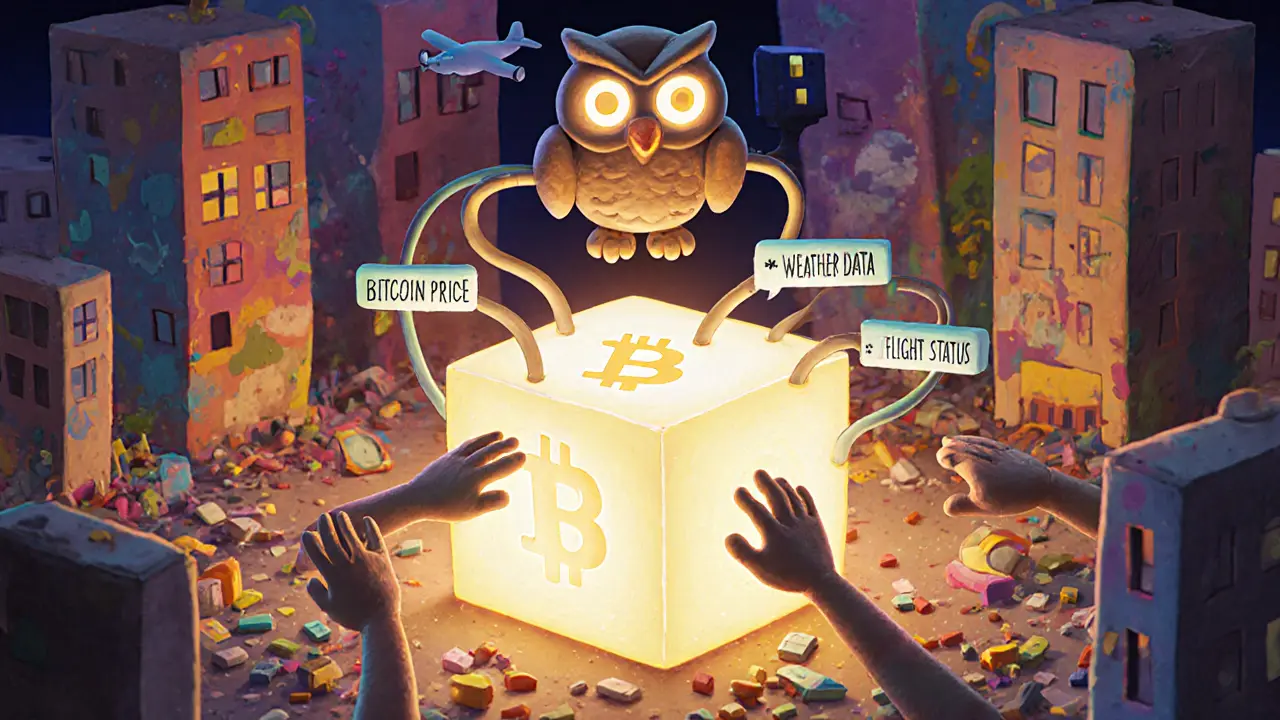Chainlink: What It Is, How It Works, and Why It Matters in Crypto
When you hear Chainlink, a decentralized oracle network that brings real-world data onto blockchains. Also known as LINK, it's not a coin you hold for speculation—it's the invisible bridge that lets smart contracts react to actual events like stock prices, weather, or sports results. Without Chainlink, most DeFi apps would be guessing what’s happening outside their blockchain. Imagine a loan system that shuts down when the price of Bitcoin drops—but it can’t see Bitcoin’s price. That’s where Chainlink comes in.
Chainlink works by pulling data from multiple sources—like APIs from Google, Yahoo, or financial feeds—and verifying it through a network of independent nodes. These nodes aren’t controlled by one company. They’re run by people and organizations around the world, each getting paid in LINK tokens for accurate data. If even one node gives bad info, the system ignores it. This isn’t just tech—it’s trust built into code. And because it’s decentralized, it can’t be shut down by a single government, bank, or corporation. That’s why big players like Google, SWIFT, and the Swiss National Bank have tested or integrated it.
Chainlink doesn’t just feed data. It enables entire systems. Think of insurance that pays out automatically after a hurricane, or a futures contract that settles based on oil prices. These aren’t sci-fi—they’re live on Chainlink right now. But here’s the catch: most people don’t realize how much of their DeFi experience depends on it. If you’ve ever staked, swapped, or borrowed crypto, there’s a good chance Chainlink was quietly making sure the numbers were real.
It’s not perfect. Nodes can fail. Data can be delayed. But it’s the most battle-tested oracle system out there, and it’s constantly improving. Projects that skip reliable oracles risk collapse when the real world doesn’t match their code. That’s why Chainlink isn’t just another crypto project—it’s infrastructure, like electricity or internet cables, but for blockchain.
Below, you’ll find real reviews and breakdowns of platforms and tokens that either use Chainlink—or ignore it at their peril. Some are high-risk DeFi farms pretending to be secure. Others are exchanges built on shaky data feeds. You’ll see which ones actually rely on Chainlink’s reliability, and which ones are just gambling with your money. This isn’t theory. It’s what’s happening in the crypto world right now.
What Are Blockchain Oracles? A Clear Guide to How They Connect Smart Contracts to the Real World
Blockchain oracles connect smart contracts to real-world data like prices, weather, and sensor readings. Without them, blockchains can't interact with external systems. Learn how they work, why they matter, and which networks are leading the space.
